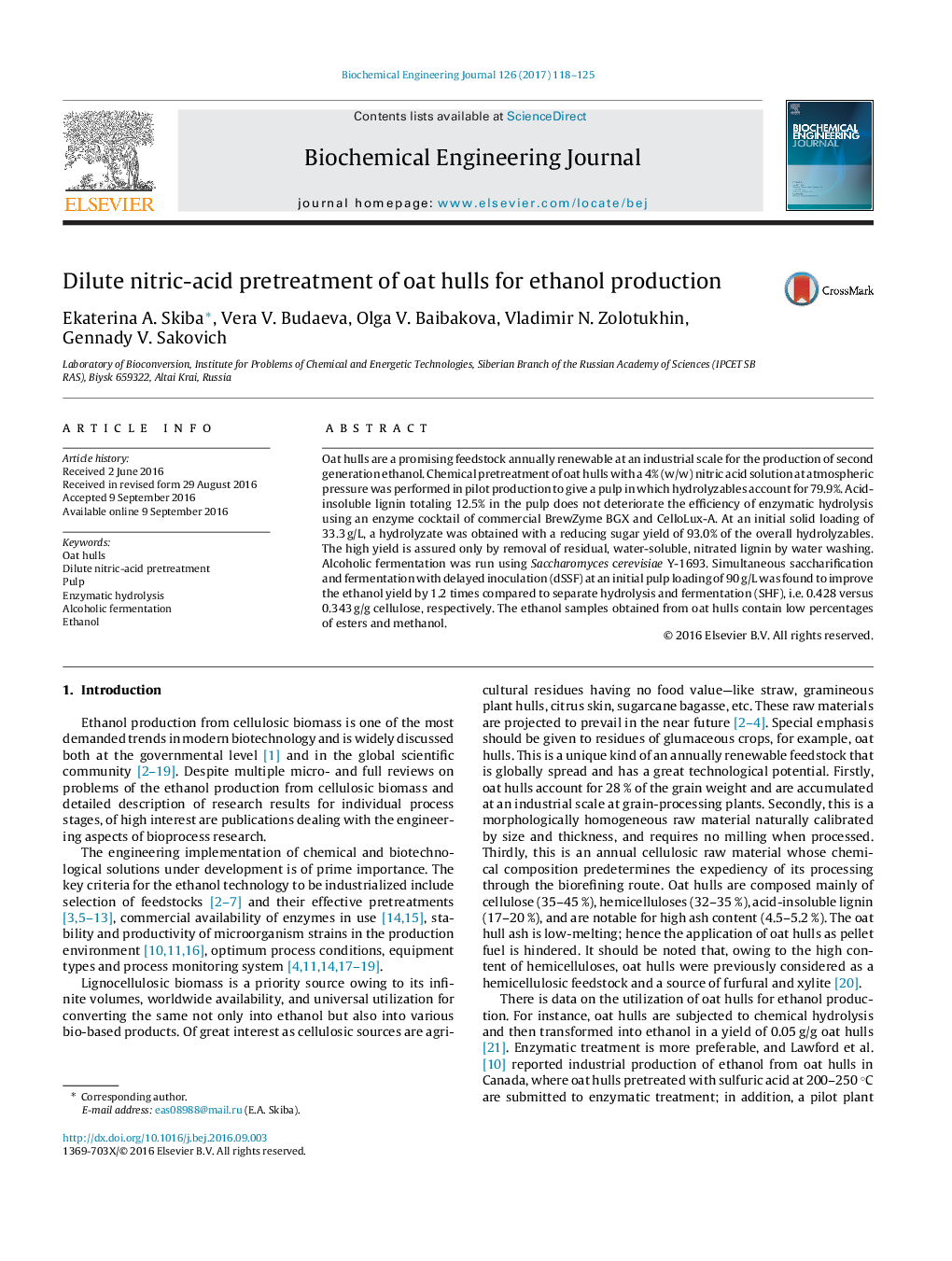| Article ID | Journal | Published Year | Pages | File Type |
|---|---|---|---|---|
| 4752077 | Biochemical Engineering Journal | 2017 | 8 Pages |
â¢Oat hulls were processed with nitric acid in a 250-L atmospheric-pressure reactor.â¢The resultant pulp comprises 79.9% of hydrolyzables.â¢Acid-insoluble lignin contained in the pulp does not inhibit enzymatic hydrolysis.â¢Reducing sugar yield at solid loading of 33.3 g/L is 93% of the overall hydrolyzables.â¢dSSF at solid loading of 90 g/L produces 0.428 g ethanol/g cellulose.
Oat hulls are a promising feedstock annually renewable at an industrial scale for the production of second generation ethanol. Chemical pretreatment of oat hulls with a 4% (w/w) nitric acid solution at atmospheric pressure was performed in pilot production to give a pulp in which hydrolyzables account for 79.9%. Acid-insoluble lignin totaling 12.5% in the pulp does not deteriorate the efficiency of enzymatic hydrolysis using an enzyme cocktail of commercial BrewZyme BGX and CelloLux-A. At an initial solid loading of 33.3Â g/L, a hydrolyzate was obtained with a reducing sugar yield of 93.0% of the overall hydrolyzables. The high yield is assured only by removal of residual, water-soluble, nitrated lignin by water washing. Alcoholic fermentation was run using Saccharomyces Ñerevisiae Y-1693. Simultaneous saccharification and fermentation with delayed inoculation (dSSF) at an initial pulp loading of 90Â g/L was found to improve the ethanol yield by 1.2 times compared to separate hydrolysis and fermentation (SHF), i.e. 0.428 versus 0.343Â g/g cellulose, respectively. The ethanol samples obtained from oat hulls contain low percentages of esters and methanol.
Graphical abstractDownload high-res image (230KB)Download full-size image
